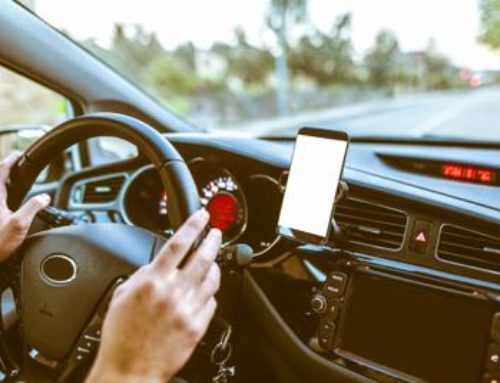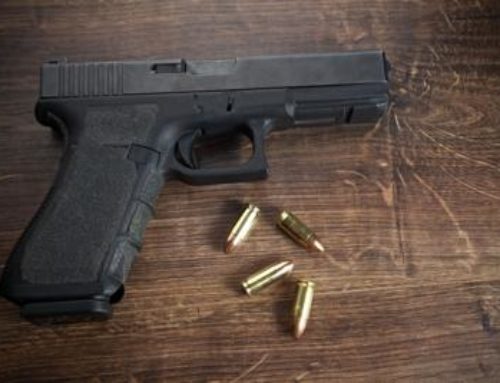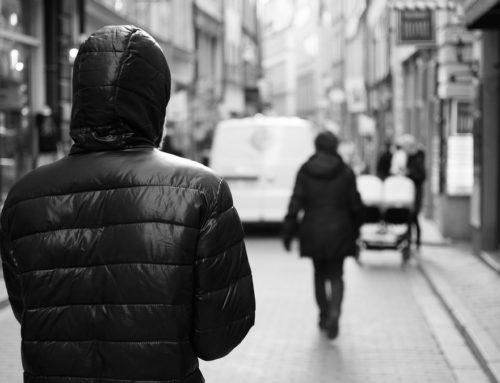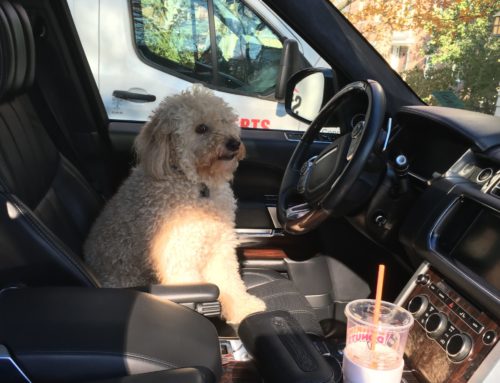September is Baby Safety Month. Baby Safety Month helps raise visibility around safety concerns for babies and young children. The national annual campaign was created by The Juvenile Products Manufacturers Association (JPMA), the national trade organization that works to improve children’s product safety. Whether you are expecting a baby, have children of your own or are currently caring for an infant, there are steps you can take to ensure the child’s safety.
Baby Safety Month started in 1983 when JPMA started “Expectant Mother’s Day.” In 1986, it was extended to a week-long celebration, until 1991, when JPMA sponsored the first “Baby Safety Awareness Month.” Since then, every September has been designated as Baby Safety Month.
Why is baby safety month important?
- Preventable injuries are the leading cause of death of children younger than four years old in the United States. (Centers for Disease Control and Prevention)
- Car seats can reduce the risk of fatal injury in a crash by as much as 71%, but 73% of car seats are not installed and used correctly. (National Highway Traffic Safety Administration)
- Approximately 3,500 infants die annually in the United States from sleep-related deaths, including sudden infant death syndrome (SIDS); unexplainable deaths; and accidental suffocation and strangulation. Room-sharing, but not bed sharing, decreases the risk of SIDS by as much as 50%. (American Academy of Pediatrics)
ABOUT JPMA: The Juvenile Products Manufacturers Association (JPMA) is the voice of the industry on quality and safety for baby and children’s products in North America. We do this by:
- Advocating for safety through product certification programs and legislative and regulatory involvement;
- Supporting a broad and diverse membership through member-only programming and industry promotion;
- And by acting as a comprehensive source for baby product information and education.
JPMA members represent 95 percent of the prenatal to preschool products sold in North America.
September 2019, JPMA is focusing on helping parents and caregivers navigate safety concerns associated with the “ages and stages” of early childhood, providing actionable tips and useful resources for selecting and using products designed to support the safety of babies and young children as they grow and explore their world. This includes finding age appropriate products and recognizing when to transition to different products based on age, weight and developmental needs. JPMA recommends parents and caregivers do a daily safety check for potential hazards in their home from baby’s point of view – down on hands and knees.
This month is a perfect time to educate parents and caregivers about keeping infants safe and healthy through their first years. JPMA created the following tips to help with common safety questions for babies and young children:
Car Seats & Child Passenger Safety:
- Children should ride rear-facing until they reach the maximum rear-facing weight or height allowed by the manufacturer’s instructions. Ongoing research indicates that rear-facing is bio-mechanically safer than forward-facing because the car seat supports a child’s head, neck and back.
- Children who exceed rear-facing limits should ride in forward-facing car seats with internal harnesses.
- Children who exceed the forward-facing harness weight or height limits should ride in booster seats until seat belts alone fit correctly.
- Experts agree that the back seat is the safest place for children under 13 to ride.
- Follow the car seat instructions and your state law for proper selection and use, and register your car seat with the manufacturer.
- Car seats expire! Check labels and instructions for information about your model’s useful life.
- Do not use a second-hand car seat or booster seat, especially if it is beyond the useful life period indicated by its manufacturer, has ever been involved in a crash, or if it has missing or damaged parts or labels.
- Ensure everyone in the car is buckled up! Unrestrained passengers can be thrown with violent force in a sudden stop or crash, potentially injuring themselves and others in the vehicle.
- Use your car seat during air travel to protect your child from turbulence. Most car seats with internal harnesses are approved for use on aircraft and display a label that says, “This Restraint is Certified for Use in Motor Vehicles and Aircraft.” While booster seats cannot be used in flight, you can pack yours as luggage, so you have it at your destination and won’t have to rent one.
Sleep Safety:
- The safest place for baby to sleep is in a bare, fully functional, properly assembled, JPMA Certified crib.
- For babies under 12 months of age, healthy infants should ALWAYS sleep on their backs unless otherwise advised by a pediatrician. Do not overdress your baby. Consider using a wearable blanket or other sleep clothing as an alternative to any covering. For newborns, consider swaddling.
- Before using a crib, check to make sure it has not been recalled.
- Make sure there are no missing, loose, broken or improperly installed screws, brackets or other hardware on the crib or mattress support. Check the stability and hardware of the crib often. Do not substitute hardware. Only use hardware obtained directly from the manufacturer.
- Always use a properly-fitting mattress as infants can suffocate in gaps between a poorly-fitting mattress and the crib sides or ends.
- Room-share, instead of bed-share, for the first year.
- If using a baby monitor with cords, make sure all cords are out of arm’s reach of your child. Never place any item in or on the crib that has cords, strings, etc., as babies can become entangled and strangle in these items. At least three feet away is where your monitor should say.
- Avoid strangulation hazards and never place the crib or toddler bed near windows with cords from blinds or drapes.
- When your child is able to pull to a standing position, set the mattress to the lowest position and remove any objects that could serve as steps for climbing out.
- Mobiles should be removed from the crib when baby can push up on hands and knees or pull up to a standing position.
- Move your child to a toddler bed when he or she begins to climb out or reaches a height of 35-inches.
Home & Product Safety:
- Never leave children unattended during bath time and avoid distractions.
- Correctly use and adjust straps and harnesses on products when available, each and every time.
- Do not place your baby in an infant seat, swing, bouncer or car seat on a countertop, table or any elevated surface.
- When changing or bathing baby, be sure everything you need, such as diapers, shampoo and toys, are within arm’s reach. Use the restraints on your changing pad and bathers every time.
- When using activity centers, mats or bouncers, keep away from stairs, doors, windows, plants, lamps, the television, fireplace, heaters or tables.
- When baby can crawl, install gates on doorways and stairways. If they try to climb the gate, teach them to use the stairs.
- Follow manufacturer’s instructions, warning labels and recommendations for age and weight requirements.
Parents and caregivers across the country can look for local car seat educational events in their communities throughout the month.
Additional tips from mibluesperspectives.com:
- Watch your pets around baby. When you bring your baby home for the first time, pay careful attention to how your pet(s) reacts. Most importantly, never leave your baby and pet(s) unattended together. Animal Planetis an excellent source for tips on how to introduce a new baby to your pet(s).
- Know first aid procedures. In an emergency, calling 911 will ensure that you and your baby receive the medical attention you need. However, taking an infant/child CPR and choking training class can help prepare you to perform life-saving maneuvers should you need them. Find classes near you through American Red Cross.
- Create a file specifically for baby. Fill a folder with important information regarding your baby’s health care. This can include the pediatrician’s phone number, nurse’s hotline and poison control, a copy of your insurance card and medical credit card, a record of any medical history, allergies or complications. Make copies of this information for an additional on-the-go file.
Some additional safety precautions from OnSafety.cpsc.gov/:
Water Safety:
Drowning is the leading cause of unintentional death for children ages one to four. CPSC Chairman Ann Marie Buerkle says, “we must do more to protect kids in the water.”
• Never leave a child unattended in or near water.
• Install proper barriers, covers and alarms on and around your pool and spa.
• Teach children how to swim and learn CPR.
Drownings also happen in the home.
• Never leave a baby alone, or with young siblings, in a bathtub and always keep baby within arm’s reach. Children can drown quickly and silently. Even in small amounts of water.
• Keep the toilet lid down and make sure all containers with liquids are emptied immediately after use.
Cord Safety:
Cords can pose strangulation hazards to children, whether they are connected to window blinds baby monitors or lamps.
• Keep cords up and out of reach of children.
• Use cordless window coverings in all homes where children live or visit.
• Do not place cribs, beds and furniture close to the windows because children can climb on them and gain access to window blind cords.
• Remember to keep cribs at least three feet away from all cords that the child may reach while inside the crib.
Baby Wearing:
CPSC urges parents of infants younger than four months of age, premature or low birth-weight babies, and babies with colds and respiratory problems to use extra caution and consult their pediatricians about using infant sling carriers. If you are using a sling:
- Make sure the infant’s face is not covered and is visible at all times to the sling’s wearer.
• Be vigilant about frequently checking your baby while in a sling, always making sure nothing is blocking baby’s nose and mouth and that baby’s chin is away from her chest.
• Avoid nursing baby in sling … If using it, change the baby’s position after feeding so the baby’s head is facing up and is clear of the sling and the mother’s body.
The reality is that most injuries can be prevented, and parents and caregivers play the biggest role in making sure little ones stay safe. Babies require a lot of things — toys, strollers, cribs, diapers, wipes, carriers, food, lotion, you name it. Safety month is a good reminder to parents and consumers of the importance of both baby safety and purchasing safe products. If you have any questions or your baby has been injured, call Schulze Law.
JPMA has partnered with Walmart, RILA, Safe Kids Worldwide, First Candle, Window Covering Safety Council, American Home Furnishings Alliance, National Safety Council, International Association For Child Safety, Safety Mom, and Twiniversity for 2019’s Baby Safety Month. For more information about Baby Safety Month and tips for caring for babies and young children, visit https://www.babysafetymonth.org.
To find out more about JPMA, their certification program and products certified, and for a complete listing of JPMA Members, please visit https://www.jpma.org. Follow JPMA on Twitter @JPMA and connect with us on Facebook to learn about additional safety tips and JPMA initiatives
https://www.jpma.org/page/baby_safety_month
https://www.mibluesperspectives.com/2019/09/04/baby-safety-month-care-tips-for-infants/
https://www.safekids.org/blog/5-tips-new-parents-during-baby-safety-month






